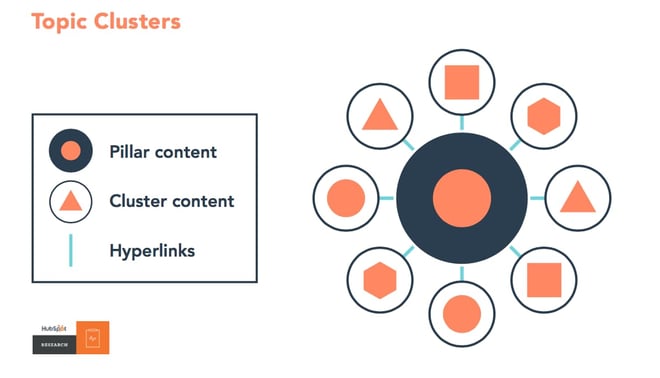Learn how to leverage HubSpot's SEO tools to boost your website's visibility on search engines and attract more organic traffic.
Understanding HubSpot's SEO Tools

Understanding HubSpot's SEO Tools
HubSpot's SEO tools are like the Swiss Army knife of website optimization, packed with features to skyrocket your search engine rankings. These tools not only give you a peek behind the SEO curtain but also serve up the juicy data you need to make those all-important data-driven decisions.
One standout feature is their knack for tracking keyword rankings. By keeping an eye on how your website stacks up for specific keywords, you can spot golden opportunities for improvement and fine-tune your content to hit the SEO jackpot.
But wait, there's more! HubSpot's SEO tools also dish out on-page optimization tips that are as good as grandma's secret recipe. From sprucing up your meta tags to jazzing up your headings, these recommendations ensure that your website is a feast for search engines and a treat for your target audience.
And let's not forget about the backlink profile buffet that HubSpot's SEO tools offer. Backlinks are like the VIP pass to SEO success, and by analyzing your backlinks, you can uncover hidden gems to boost your website's authority and climb the search engine rankings ladder.
In a nutshell, mastering HubSpot's SEO tools is the key to unlocking your website's full potential on search engines and pulling in a crowd of organic traffic.
Implementing On-Page SEO Strategies

Implementing On-Page SEO Strategies
On-page SEO strategies are like the secret sauce to spicing up your website for search engines. Thanks to HubSpot's SEO tools, executing these strategies becomes a breeze.
First up on the on-page SEO menu is keyword research. HubSpot's SEO tools serve up a platter of keyword options that are not only relevant but also have a high search volume and low competition. Sprinkle these keywords into your website's content, meta tags, and headings, and voila! You've just upped your chances of ranking higher in search engine results.
Next on the menu is optimizing your website's meta tags. These little tags, like the title tag and meta description, give search engines a taste of what your webpage is all about. HubSpot's SEO tools offer up suggestions to season these meta tags just right, making sure they're both compelling and keyword-rich.
And let's not forget about dressing up your website's headings. H1 and H2 tags not only make your content more digestible for users but also send a signal to search engines about the star topics on your webpage. Follow HubSpot's seasoning recommendations for headings, and you'll be on your way to serving up a website that search engines just can't resist.
By whipping up these on-page SEO strategies with HubSpot's SEO tools, you're sure to attract more organic traffic and boost your website's visibility on search engines.
Creating High-Quality Content
Crafting top-notch content is essential for boosting your website's search engine rankings, and luckily, HubSpot's SEO tools are here to lend a helping hand.
With HubSpot's SEO tools, you'll receive recommendations on optimizing your content to make it both engaging and search engine-friendly. From weaving in relevant keywords to enhancing your content's structure and readability, these suggestions are key to creating content that resonates with your audience.
Furthermore, HubSpot's SEO tools provide valuable insights into how your content performs, including its ranking for specific keywords and how it stacks up against your competitors. By delving into this data, you can pinpoint areas for improvement and fine-tune your content to better capture your audience's attention.
And let's not forget about optimizing your website's images - an often overlooked aspect of SEO. HubSpot's tools offer guidance on optimizing image file names, alt text, and sizes, ensuring that your visuals not only enhance user experience but also bolster your search engine rankings.
Leveraging HubSpot's Analytics for SEO Insights
Harnessing HubSpot's analytics is crucial for unlocking valuable insights into your website's SEO performance and fine-tuning your strategies.
With HubSpot's SEO tools, you have access to comprehensive analytics that let you monitor key SEO metrics like organic traffic, keyword rankings, and backlink profile. By keeping an eye on these metrics, you can pinpoint trends, identify areas for enhancement, and make informed decisions to boost your website's search engine rankings.
Moreover, HubSpot's analytics feature competitor analysis, enabling you to compare your website's performance against that of your rivals and uncover opportunities to outshine them in search engine rankings.
Additionally, HubSpot's analytics shed light on user behavior on your website, revealing details such as the pages they frequent, the time they spend on each page, and the actions they take. Armed with this knowledge, you can make strategic choices to enhance user experience and drive increased engagement.
Measuring Success and Iterating on SEO Strategies
Evaluating the effectiveness of your SEO strategies is key to fine-tuning your website's search engine rankings in the long run. Thanks to HubSpot's SEO tools, tracking and measuring the impact of your efforts is a breeze.
HubSpot's SEO tools offer in-depth reporting and analytics that enable you to keep tabs on vital metrics like organic traffic, keyword rankings, and backlink profile. By consistently reviewing these metrics, you can gauge how well your SEO strategies are performing and make informed decisions to enhance your website's search engine rankings.
Furthermore, HubSpot's SEO tools allow you to establish goals and monitor your progress in achieving them. Whether your aim is to boost organic traffic, enhance keyword rankings, or cultivate top-notch backlinks, you can set specific targets and use the tools to track your advancement.
Drawing from the insights garnered from evaluating your SEO success, you can refine your strategies and make any necessary tweaks. This iterative approach empowers you to continually optimize your website's search engine rankings and stay one step ahead of the competition.
For more information and detailed resources, visit Bantam Digital's HubSpot Services and explore how to optimize your HubSpot implementation and management processes.
.png?width=1000&height=500&name=Bantam%20Logo%20Final%20Horizontal%202025%20(2).png)